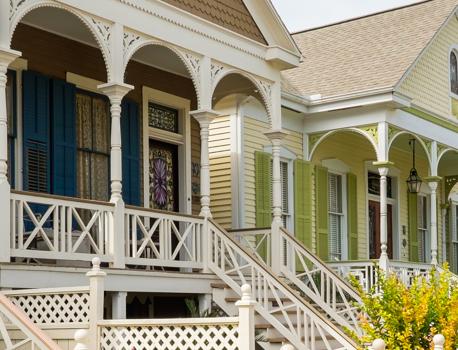Neighborhood Historic Designation Can Raise Property Values

A neighborhood historic designation won’t guarantee home values in the historic district will rise, but studies show it’s likely.
Home values rose 5% to 35% per decade in more than 20 historic districts nationwide, compared with home values in undesignated neighborhoods in the same communities, according to a 2007 analysis by Jonathan Mabry, historic preservation officer for Tucson, Ariz.
The biggest property value boost comes from local historic district designations and districts that layer local and national designations, the study says.
Why neighborhood historic designations protect property values
Even if your home’s price doesn’t rise, it’s less likely to fall if your neighborhood is in a historic district.
That’s because historic neighborhood designations help ensure that the aspects that make the area attractive to home buyers will be protected over time by explicit design limits on such things as demolitions and out-of-character exterior remodeling, according to the National Trust for Historic Preservation.
If your historic neighborhood includes commercial buildings, your home’s value could rise even more because home buyers pay a premium for homes where they can walk to shops, restaurants, and work.
If you don’t have time to research the historic aspects of your whole neighborhood, apply for a historic designation for your home, which takes less time and research.
Choose an appraiser who knows historic designations
When you need to value your historic home, say because you’re refinancing your mortgage or deciding how much insurance to buy, use an appraiser who specializes in the historic designation home valuations niche.
If your home has historic designation, but the neighborhood doesn’t, be especially picky about the appraiser’s expertise in historic properties. Your home will be harder to accurately appraise than a historic home in a designated district that’s better known to appraisers.
3 neighborhood historic designation options
-
Local historic designations for districts or individual homes are typically created via a town zoning board vote. Once your home is in a local historic district, you’ll have to put up with architectural reviews and more restrictions when you want to renovate, demolish, or build a new home. Those restrictions can be a pain in your side when you want to repaint your home, but they also keep the neighbors from building an out-of-scale monstrosity next door.
-
State designations for historic districts usually let individual owners opt to include themselves or decline to participate. Your state may even offer you a property tax break for owning a home in a historic district.
-
National historic designations involve public persuasion because a majority of your neighbors have to approve your plans to turn the area into a historic district.


